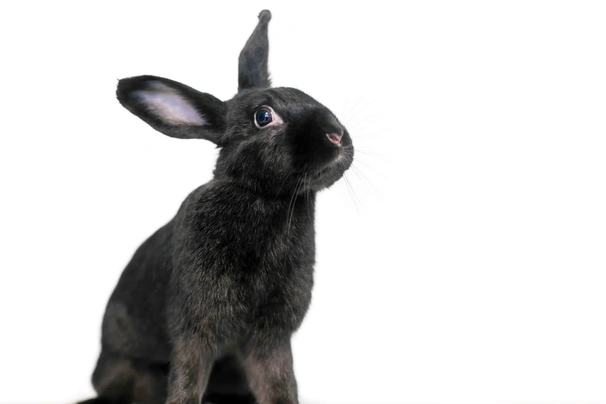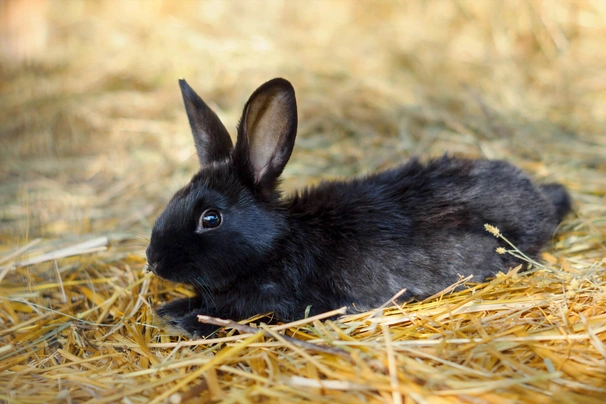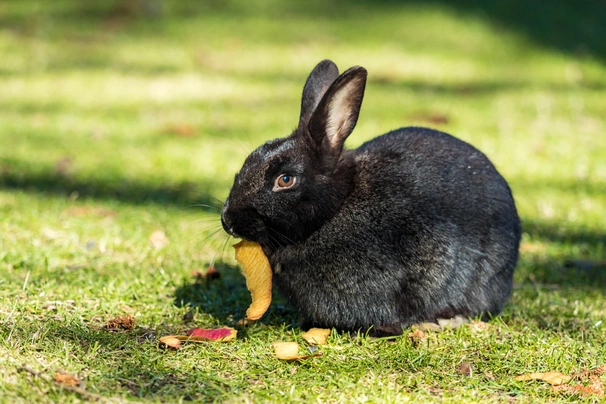Havana
Introduction of the Havana
Often referred to as the ‘mink of the rabbit family’, the Havana is a small rabbit – usually weighing in at around 4.5lbs. The breed displays a gorgeous, luxurious coat that’s deep and rich. The most popular shade is undoubtedly the chocolate variety, which was the original colour of the breed and the one that gives it its name. Contrary to popular belief, the Havana was not developed in Cuba, but in Holland, and the glossy brown coat was thought to closely resemble the colour of the famous cigar.
The Havana is now seen in blue, black, broken and the famous chocolate, and is the foundations animal for a number of other breeds including the Perlefee, Gris Perle de Hal and the Fee de Marbourg. The breed is shown as a fur animal and unsurprisingly gains most of its show points for its colour and fur quality.
History of the Havana
The Havana rabbit originates in Holland, not the Caribbean as you might expect. They get their name from the fact that the chocolate variety closely resembles the colour of the deep brown Havana cigars, not because the breed hails from Cuba.
The origins of the breed are quite straightforward – a brown kit with a wonderfully lustrous coat was born in a litter of Dutch rabbits in Holland in the 1880s and immediately became popular because of their rich, dense fur.
Chocolate Havanas arrived on British shores in the first decade of the 20th century, and were recognised by the first incarnation of the ARBA in 1916. The Blue variety was accepted by the ARBA in the 1960s, the black in the ‘80s and the most recent type to gain recognition is the broken, was officially recognised in 2007.
Appearance of the Havana
- Main colourways: chocolate, blue, black and broken
- Average weight: 2 – 2.9kg
There are few breeds where a regular show animal meets so closely the breed standard, but the Havana is one such type. The best Havanas are almost perfect representations of the standard and while, to the untrained eye, they may look like a fairly normal animal, to a judge some of the finest examples are stunning.
Many Havanas win Best in Show titles the world over and although it’s not a particularly ‘showy’ breed, those in the know can spot a good animal from a mile away. The body is short and well rounded – forming almost a semi-circular shape when on the table.
When they’re looked at from above the rear end should taper evenly towards the neck and shoulders and there shouldn’t be any narrow or pinched areas. The ears and head are balanced and in proportion to the body. While the form of the animal is important to the judges, the coat and fur are equally important. As a breed that has ‘flybacks’ – fur that quickly returns to its regular position when brushed the wrong way – the coat does not have a traditional shine, but rather a deep lustre that’s incredibly attractive.
Temperament of the Havana
The Havana Rabbit is known for having a relaxed, friendly personality. However there are also examples that have been known to have a bit of an attitude so it’s well worth researching the lines you’re thinking of purchasing from to make sure that all of his relatives have been even tempered.
As long as he’s been allowed to get used to humans and other pets from an early age your Havana rabbit should be calm and able to cope with human interaction without getting stressed. It’s vital that anyone who’s going to be charged with looking after the rabbit knows exactly how to handle it as they can struggle if they feel vulnerable or uncomfortable when picked up. Despite his small size, he will be very strong and can kick and scratch, potentially injuring himself or his handler.
Most rabbits are active in the morning and the evening and he will be grateful for boxes, tubes and toys to play with.
Health of the Havana
Primarily a show animal, the Havana is usually cared for to the highest possible standards and his every whim is catered for. An animal that is sick or injured will not do well in the showring so keeping a close eye on their rabbit’s wellbeing is at the top of most owners’ lists.
Dental health is probably the most important issue for any rabbit owner as the teeth of all rodents grow all the time, and can cause problems if they’re allowed to get too long. Injuries in the mouth and difficulty eating are just a couple of the issues that can arise if the teeth are allowed to get too long. Feeding plenty of roughage will help keep his teeth worn down and regular checks will highlight any problems before they get out of control.
Rabbits should not be allowed to get overweight so overfeeding must be avoided. Obesity can not only lead to heart disease, it can also prevent thorough grooming and soiled fur can attract flies. These flies can lay their eggs in the dirty areas and the resulting maggots can burrow under the skin of the rabbit. This is both uncomfortable and potentially dangerous as it can lead to infection. Any rabbit kept in unsanitary conditions or with a soiled coat is vulnerable to flystrike.
All rabbits must be vaccinated against the highly infectious diseases myxomatosis and Viral Haemorrhagic Disease, both of which can be passed on by wild rabbits. Your pet should be treated regularly for worms, fleas and ticks and non-breeding does should be spayed to prevent uterine cancer.
Caring for the Havana
Most owners of show rabbits will keep them in cages in a light, airy shed that has good air flow. If you decide to keep your rabbit outdoors his hutch should be placed in a shed, or out of direct sun and wind and the hutch should be completely weatherproof. He should be provided with a nesting area and the hutch should be lined with plenty of clean shavings and straw. The hutch should be emptied and cleaned once a week, with droppings and toilet areas removed every day or two. If he is going to live outside, it would be well worth considering getting two rabbits as they are very much a social animals and will thrive in company. Two neutered males or a neutered male and a doe will get on best.
If he’s going to be a house rabbit then he will still need a cage or crate to retire to when he needs a break. He can be toilet trained and any cables and wires should be kept out of his way. An indoor or an outdoor rabbit will benefit from access to the outdoors and he should be provided with a run or secure area of garden where he can explore and play.
A rabbit’s diet should be made up of high-quality hay, good pellets and lots of fibrous leaves and vegetables and he should have access to clean drinking water at all times.


